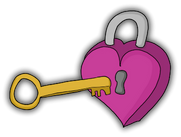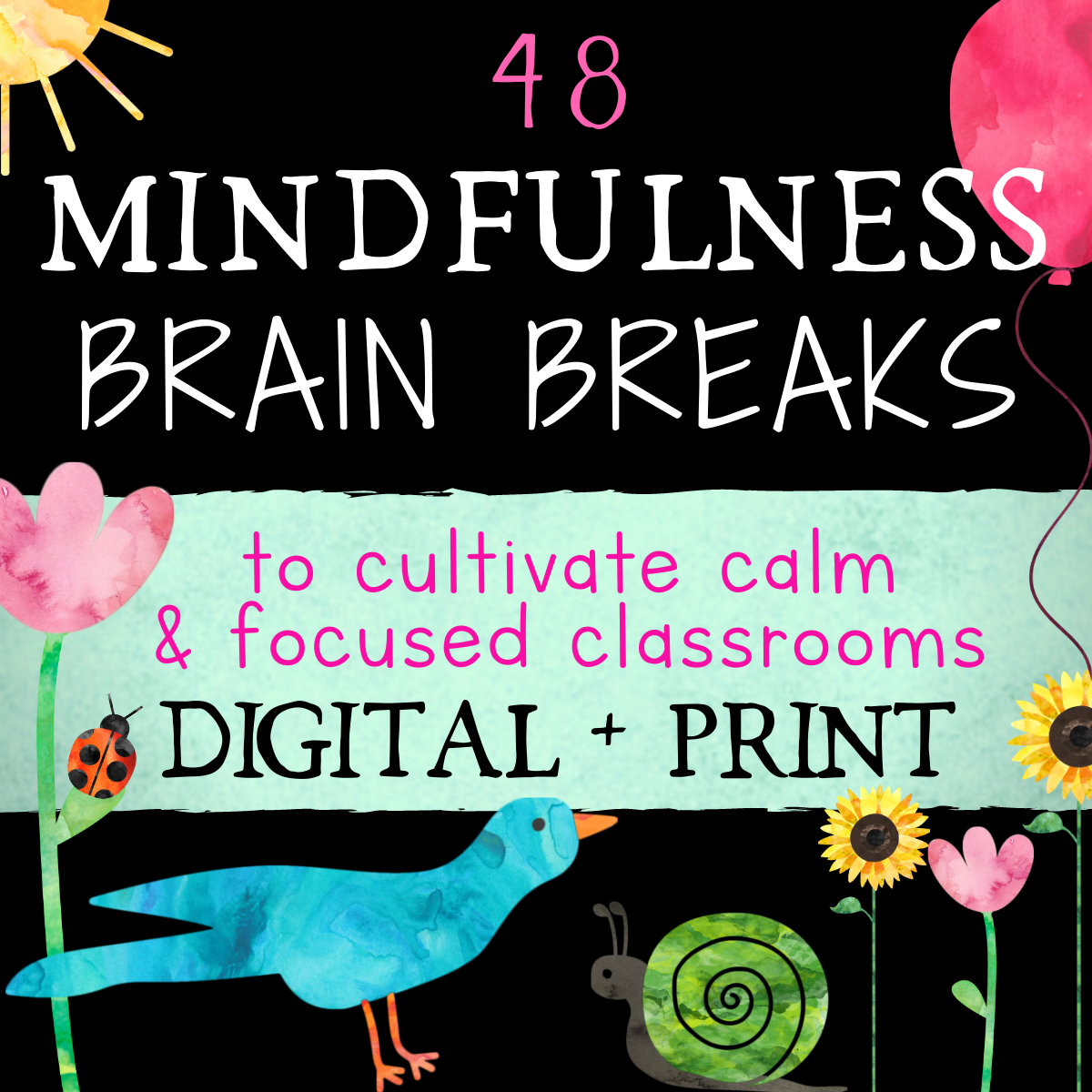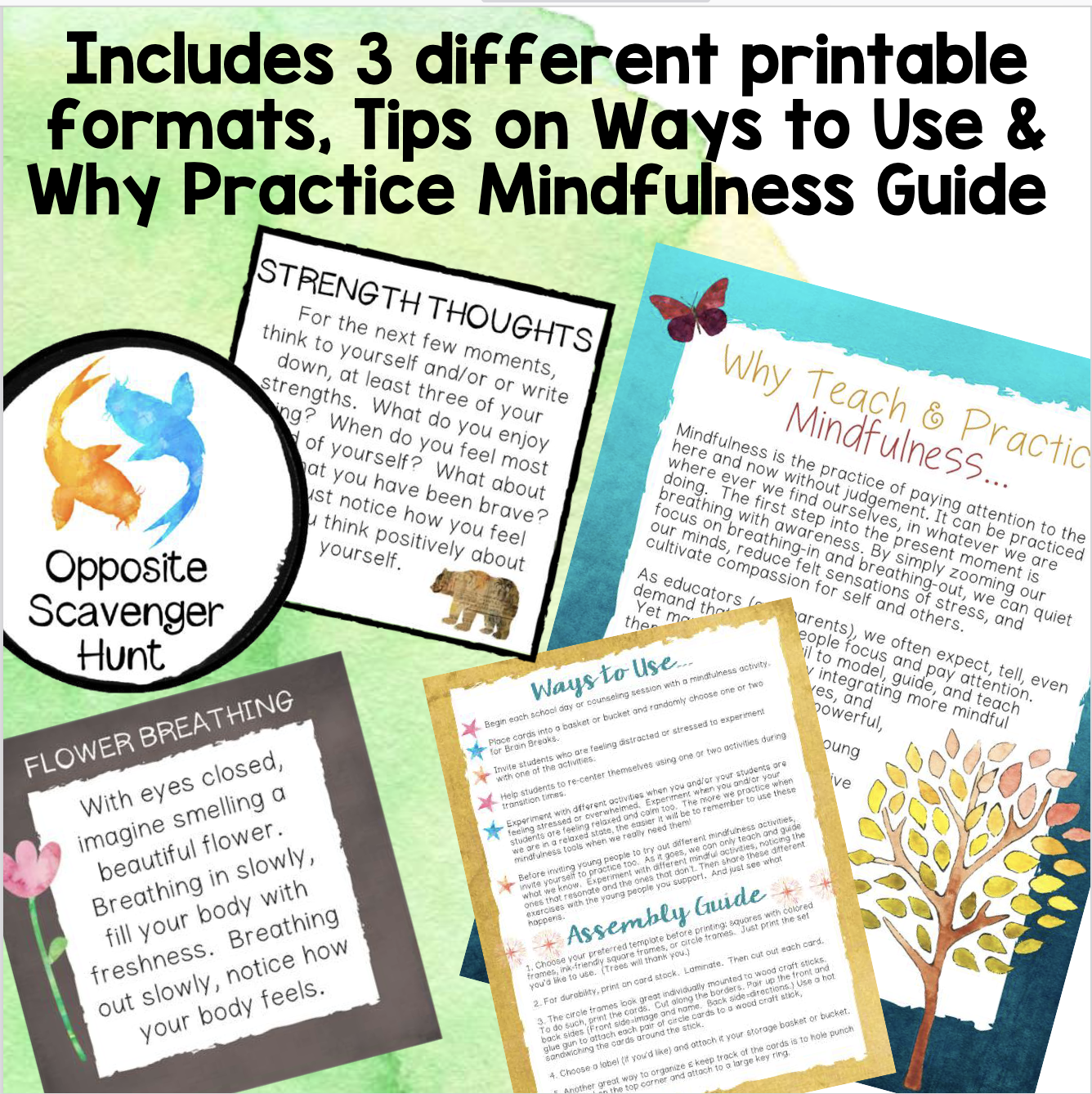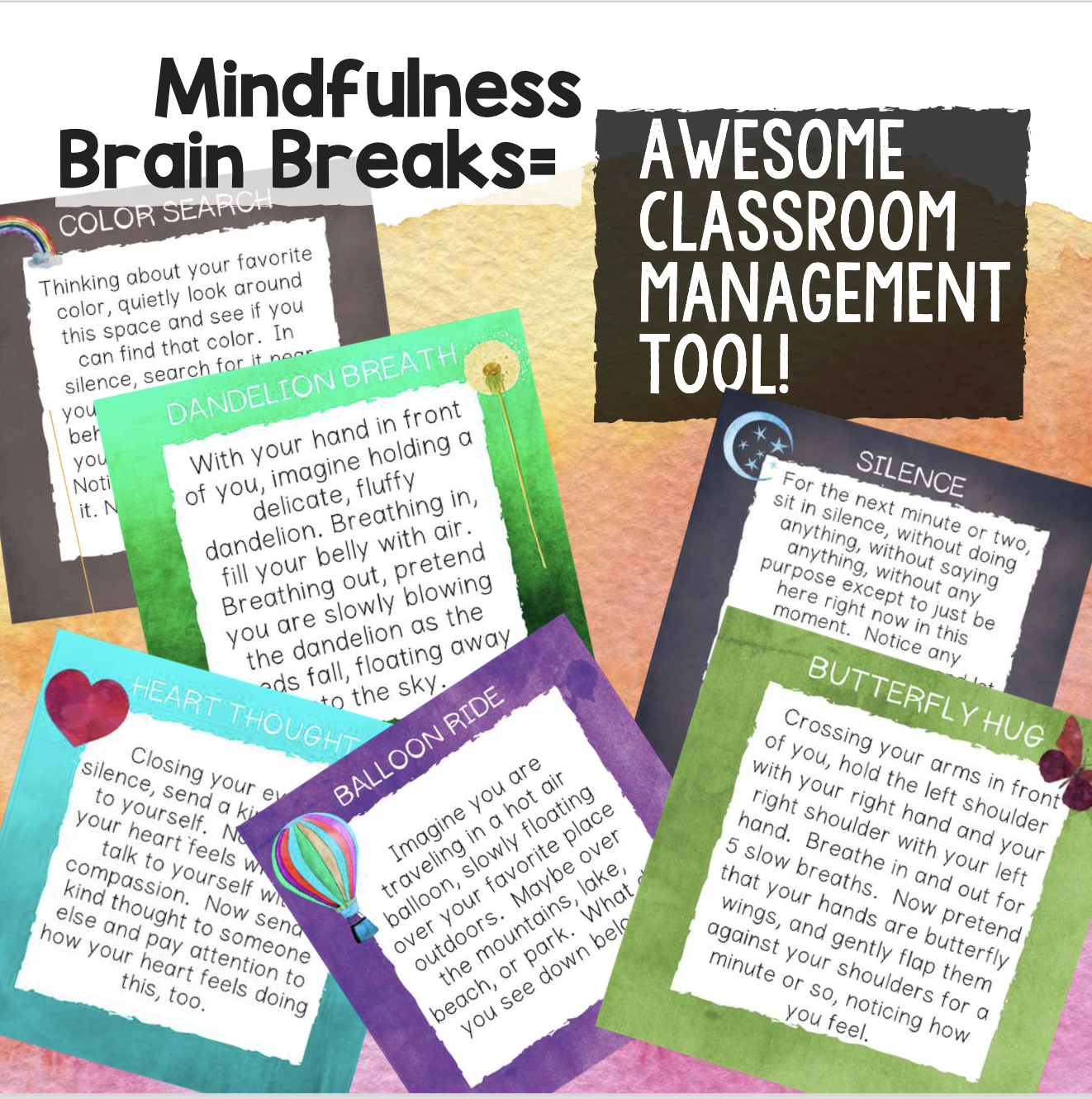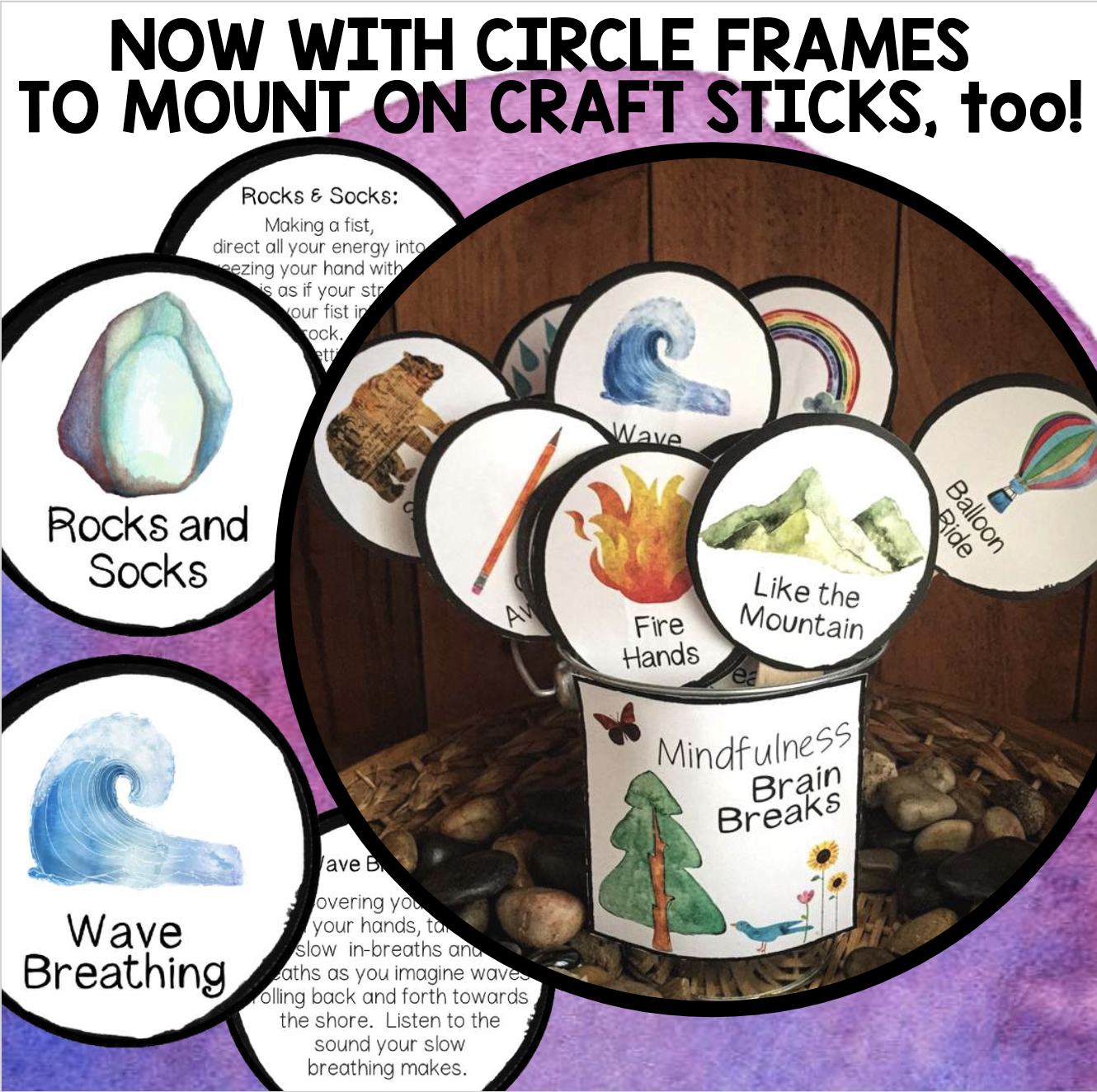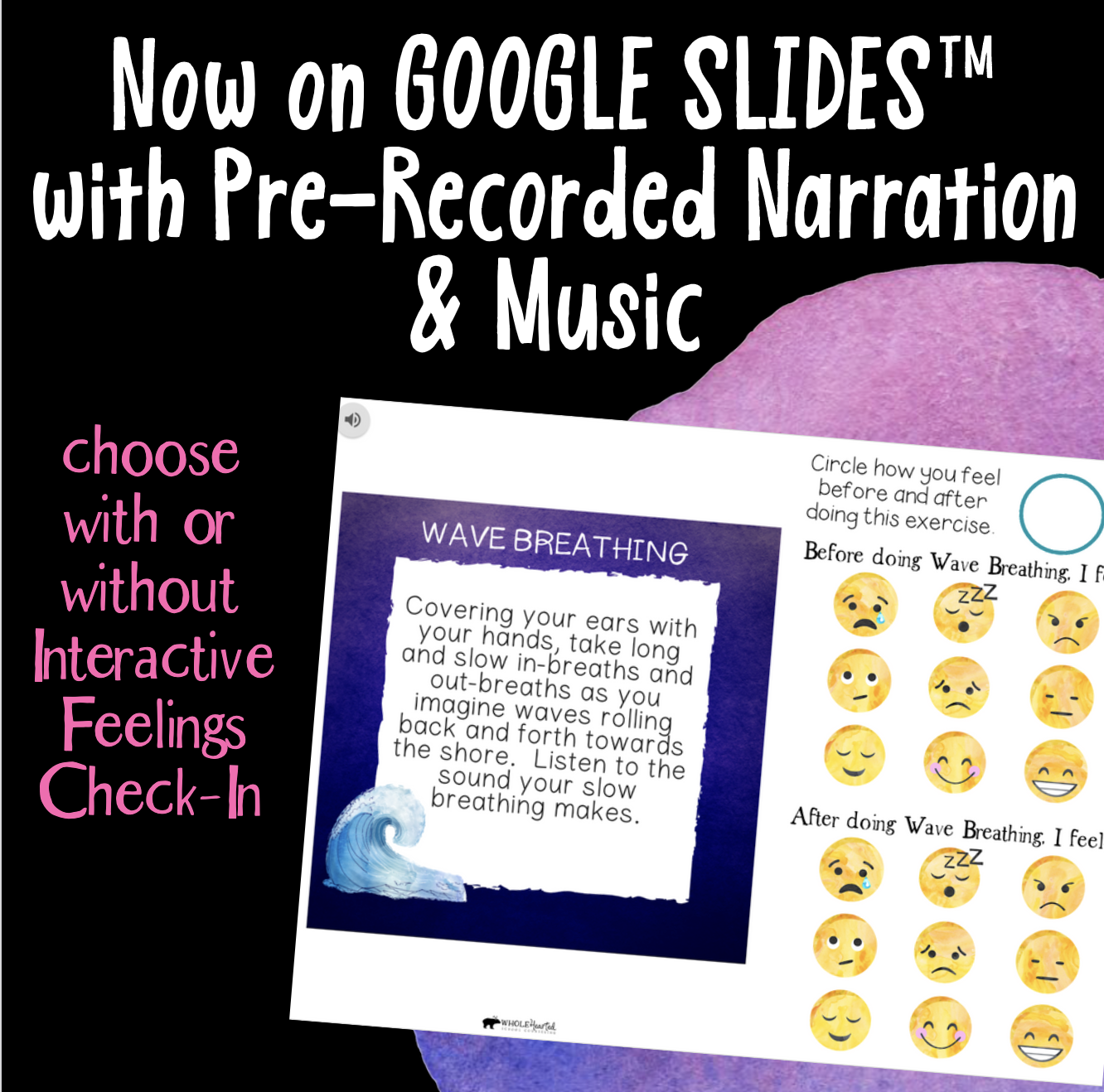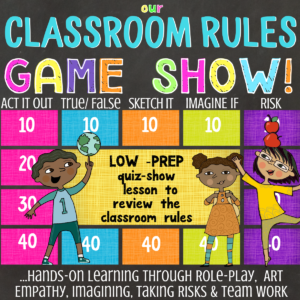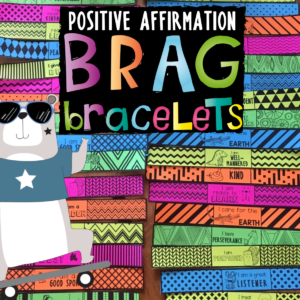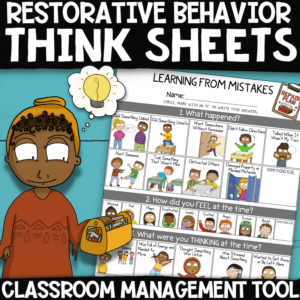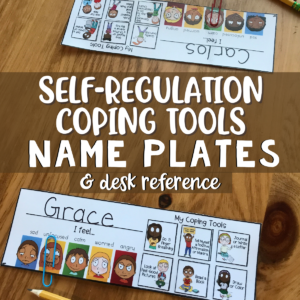SAVE BIG when you build your own bundle! Add any 8 individual products to your cart to receive 30% off!

Mindfulness Brain Breaks: Classroom Management Coping Skills for Calm + Focus
$5.50
Categories
Nothing Found
No Gift Card Category Found.
Description
USING MINDFULNESS BRAIN BREAKS FOR YOUR CLASSROOM MANAGEMENT
Bring calm, focus and social emotional learning support classroom using these effective and bestselling 48 Mindfulness Brain Breaks. Used in over 10,000 classrooms, both you and your students will love using these breathing and grounding exercises. Not only will everyone feel more relaxed and ready to learn, these calming brain breaks will do wonders for your trauma sensitive classroom management.
So many children and adolescents are coming to school in a heightened state of protectiveness and on-guardedness, as an adaptive strategy to survive the challenging experiences in their lives. These brain break activities are especially useful for cultivating a mindful, trauma-informed classroom. Practicing mindfulness not only creates a more peaceful, quiet environment in the classroom, mindfulness helps to create peace within, helping young people to feel more grounded, safe, and ready to learn and interact with others in healthy ways.
What is Mindfulness?
Mindfulness is the practice of paying attention to the here and now without judgement. It can be practiced where ever we find ourselves, in whatever we are doing. The first step into the present moment is breathing with awareness. By simply zooming our focus on breathing-in and breathing-out, we can quiet our minds. This helps reduce felt sensations of stress, and cultivate compassion for self and others.
How These Relaxing Exercises Help
As educators (and parents), we often expect, tell, even demand that young people focus and pay attention. Yet many times we fail to model, guide, and teach them how to do this. By integrating more mindful moments into our own lives, and bringing simple, but very powerful, practices into our schools (and homes), we can help young people nurture the seeds of awareness, reflection, executive functioning, and emotional regulation.
Research shows that practicing mindfulness is an effective coping strategy for anxiety, anger, depression, trauma and other social emotional challenges. It builds neurological pathways that promote presence, attention, and self-regulation. And in the context of school, mindfulness can help students to refocus on the task in front of them and bring calmness during transition times. Mindfulness improves both social-emotional and academic learning. Plus, the very nature of mindfulness exercises are experiential, which we know is one of the most impactful ways to cultivate not only learning but also the JOY of learning.
Ways to Use Our Calming Brain Breaks:
- Begin each school day or counseling session with a mindfulness activity.
- Place cards into a basket or bucket and randomly choose one or two for Brain Breaks.
- Invite students who are feeling distracted or stressed to experiment with one of the activities.
- Help students to re-center themselves using one or two activities during transition times.
- Experiment with different activities when you and/or your students are feeling stressed or overwhelmed. Experiment when you and/or your students are feeling relaxed and calm too. The more we practice when we are in a relaxed state, the easier it will be to remember to use these mindfulness tools when we really need them!
- Before inviting young people to try out different mindfulness activities, invite yourself to practice too. As it goes, we can only teach and guide what we know. Experiment with different mindful activities, noticing the ones that resonate and the ones that don’t. Then share these different exercises with the young people you support. And then just notice what happens.
- Now available in a Google Slides™ digital file with pre-recorded narration and music, making them perfect to use for distance learning.
Please note, 18 of the 48 Brain Break Mindfulness cards are part of my MINDFULNESS TOOLBOX: 10 Tools and Tricks.
For younger students who may benefit from more visual support, check out our 30 Social Emotional Learning Self-Regulation Breaks Mindfulness Breathing Videos!
Additional information
| Product Categories | Classroom Management |
|---|---|
| File Type | |
| Grade Level | K-1, 2-3, 4-5, 6-8, High School |
WHAT'S INCLUDED
✔ 48 Mindfulness Exercises
✔Google Slides™ presentation with pre-recorded narration, music and your choice of with or without Interactive Feelings Check-In
✔ 3 Different Printable Designs: vibrant colored cards, an ink-friendly set of cards and circle frames with front and back sides perfect to attach to craft sticks
✔ Why Teach and Practice Mindfulness Guide, Ideas for Use, and Assembly Instructions
WHAT OTHERS ARE SAYING
These breaks are perfect for when you want to calm your students down. I love GoNoodle but I have been noticing that their bodies were sometimes more wound up after GoNoodle. With these mindful breaks I have noticed that my students are calm and ready to work hard.
-Erin L.
August 26, 2018, TPT Review
I LOVE this! I cut them all out and laminated them and have them all on a binder ring for kids to look through and pick out their favorites when they need a brain break or a coping tool.
-Amanda H.
February 17, 2017, TPT Review
I have used these mindfulness brain breaks with my students on many occasions. They are always a hit! These are so fantastic, I use them myself! Thanks for such a beautiful resource!
-The School Counselor Is In (TPT Seller)
February 8, 2017, TPT Review
*Love* this tool! I use it in an alternative high school setting, and the kids respond really well to it! I even sneak them in on staff sometimes…and they love them too. 😉
-Whitney W.
February 8, 2017, TPT Review
Love, love, love!!! I plan to use this for my adult Mindfulness groups. These beautifully designed cards make it so easy to introduce and practice relaxation strategies. I appreciate the color friendly version too. You think of everything! 🙂
-Mental Fills Counseling Tools (TPT Seller)
December 27, 2016

You May Also Like...
Related products



